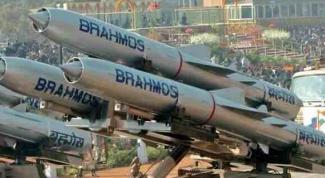Beyond Brahmos: “Produce Here, Sell Anywhere"
Indian Prime Minister Narendra Modi’s appeal to global manufacturers in his Independence Day speech on 15 August 2014—come, manufacture here, sell us and others (anywhere)—has generated varying degrees of attention in India and elsewhere. Whether such an avowal is a byproduct of a crafted political vision or a mere popular adventurism is debatable.
Immediate reactions to such a statement have, among others, made specific sections of stakeholders stand and take note, especially the defence manufacturers – national or foreign. It must be noted here that both domestic and foreign arms manufacturers interested in investing knowledge and manufacturing in the Indian defence sector have thus far been disappointed for the past decade or more, thanks primarily to three core factors – directionless politico-executive roadmap for the industry reflected through ad-hoc policy pronouncements, intricately complicated procedural mechanisms (Defence Procurement Procedure – DPP) by revising the same procedure through cosmetic changes and a disconnect among critical stakeholders (armed forces, administration, industry) of Indian defence sector.
Primary government policy pronouncements and periodic notifications on the Indian defence sector reveal several changes in policy and procedural arrangements in the Indian defence sector. For example, while ‘defence offsets’ had been introduced as a mandatory clause in any procurement tender worth more than INR 300 crore, whereby a standard 30 per cent of the worth of the contract must be ploughed back into Indian industries, there are efforts to put a strict timeline on stages of the procurement procedure. Neither defence offsets nor cosmetic changes in DPP have yielded desirable results thus far. It is learnt that while defence offsets' work value to date is less than USD 5 million with a promise of offsets works worth USD 10 billion in the pipeline (!), timelines of most of the ongoing military acquisition projects are in various stages of approval for time delays. Consider this: the RFP (request for proposal) for 126 MMRCA (medium multi-role combat aircraft) tender was floated in 2008, and the project is yet to see the light of day! In sum, the equipment-driven ambitious military modernization plan has been hit more by scandals, policy paralysis and administrative inaction than anything else.
While all these issues need serious deliberations, the most critical aspect of Indian defence – the issue of import dependency – needs urgent attention. Consider this: not only is India one of the top arms importers in the world with an ever-increasing capital acquisition budget (pegged at USD 18 billion this year), but its import dependency is considered to be to the tune of 70 per cent. Except for a few low-key items sourced from within, the Indian armed forces largely possess foreign equipment sold to them by OEMs who refuse to part with knowledge associated with those systems. This has severe implications for the armed forces, especially during conflicts, when suppliers have the prerogative to stop supplying systems or spares.
The Defence Procurement Procedure, to encourage participation from the private sector and foreign OEMs, has stipulated three types of acquisition – ‘buy global’ (when the technology is not available in India), ‘buy and make’ (collaborative arrangement between foreign OEMs and Indian companies to produce systems within India, through transfer of technology), and ‘make’ (systems produced through indigenous means by Indian companies). The story of ‘make’ projects – only half a dozen low-key projects awarded to Indian private companies thus far – has been disappointing, while thrust on ‘buy and make’ have yielded below-par results. The bulk of the acquisition projects go to government production agencies. At the same time, the private sector has been practically kept outside the defence industrial ecosystem despite braggart assertions from the government.
Both the ‘buy and make’ and ‘make’ routes are important for reducing import dependency. While more ‘make’ projects should be conceptualized for domestic manufacturers, the ‘collaborative route’ needs to be encouraged. This is where PM Modi’s appeal must be translated into action.
Collaborative models like Brahmos cruise missiles, FGFA (fifth generation fighter) and transport aircraft projects with Russians have given India a good start. However, India must go beyond Brahmo's model to appeal to the more significant global defence industry to participate in the Indian defence industrialization process. Proposed projects like the M777 ultra-light howitzers or Maitri, a next-generation quick-reaction Surface-to-Air Missile (QRSAM), can be considered the next phase of defence industrial collaborative arrangements. Defence industrial politics may resist such projects, where domestic players' interests could be hit. For example, the indigenous ‘Akash’ missile project could be hit if Maitri happens. But, such arguments do not hold if more significant arms market dynamics are taken into consideration – both missiles have a lucrative Indian as well as export market.
Similarly, M777 could face stiff competition from Indian firms like Bharat Forge or ordnance factories that claim to have developed similar systems at a lower cost. The US must also examine another collaborative proposal for Javelin anti-tank guided missiles under the Defence Trade and Technology Initiative between the two countries. Many such future collaborative proposals could come up if India shows seriousness.
The bottom line in military-industrial politics suggests that foreign OEMs may always have the upper hand. However, if India plays its arms card well, benefits could outnumber weaknesses in the long run.
